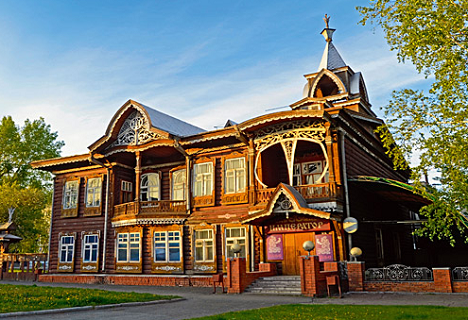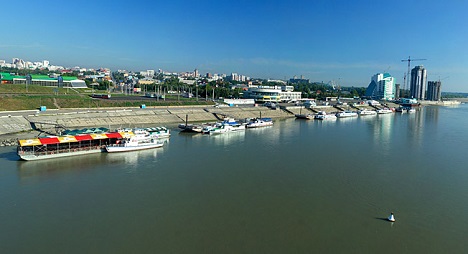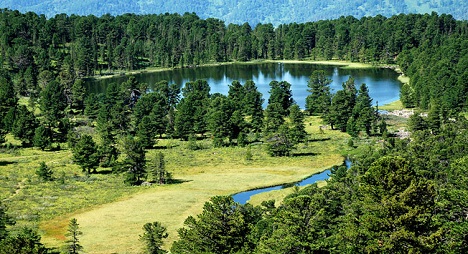Barnaul: The gateway to Altai Mountains

Architectural monument of the beginning of the 20th century, Barnaul, Altai. Source: Alamy/Legion-Media
Barnaul is a bright, friendly, medium-sized city on the Ob River (its population is 632,000). It was founded in 1730 by Ural mining industrialist Akinfey Demidov, who went on to build a silver-refining factory and other workshops in the new town.
Source: Lori/Legion-Media
Visitors should start at Demidovskaya Square, which is the very heart of the city and has the feel of a mini-St. Petersburg, which is apt because both city’s architects have quite a bit in common. Barnaul’s original architects were students and followers of Giacomo Quarenghi (who designed the Aleksandrovsky Palace of Tsarskoe Selo in Pushkin) and Carlo Rossi (architect of the Mikhailovsky Palace in St. Petersburg).
Source: Lori/Legion-Media
This square is a historical architectural complex that was built between 1829-1852 and was accomplished in accordance with the traditions of Russian classicism. On the square is a miners’ hospital, a mining school and a hospice with the old church of St. Dmitry Rostovsky, while well-preserved old merchants’ houses (which marked the edge of the city until the Revolution in 1917) and architectural monuments of the 20th century are located nearby. Check out the beautiful Nikolskaya Church (ul. Lenina 36), an eclectic mixture of elements taken from Russian and Byzantine styles, and the “House Under the Spire” (ul. Lenina 82), an excellent example of Stalinist-era classicism.
Source: Alamy/Legion-Media
Museums with curiosities
The Altai State Museum of Local History (ul. Polzunova 46) houses valuable collections on the archaeology and ethnography of the indigenous peoples of the Altai (the Altaitsy, the Teleuty and the Telengity), as well as a large model of Demidov’s silver-refining complex.
There are numerous small, but original museums throughout the city that feature unique atmospheres and identities of their own. The tourist center “Gornaya Apteka” (mountain pharmacy), at ul. Polzunova 42 is located in a low-rise building known as the “House with the Mezzanine.” Its walls have been infused with the smell of Altai herbs and honey since its founding as one of the oldest pharmacies in Siberia 280 years ago. There was a time when in addition to making medicine from local herbs, they also made soap, perfume, candy and even fireworks. This pharmacy was one of the best in the entire region. 
Source: Lori/Legion-Media
The museum is housed in a meticulously-restored building that carefully preserves not only the atmosphere of an old pharmacy – an old cashier’s desk, cupboards and a laboratory – but also some unusual rarities including scales, tiny bottles, 19th-century photographs, old books and a machine for the preparation of pills. After the museum tour, you can also buy some Altai balms, herb brews, honey and desserts made from hippophaes (a deciduous shrub native to the area).
The Museum of Time (ul. Matrosova 12) has grown out of the private collection of local resident Sergei Korepanov. The museum is full of amazing things from various epochs, all united by one main criterion: “the item exhibited must raise the interest of visitors from all age groups.” Here you’ll find also a 19th-century stereoscope (a device to view stereo-photographs) from Germany; a field samovar; a 1979 “Pingvin” siphon, which was used in to make lemonade in the USSR; and a Hungarian wooden mule.
A place under the pines
Source: Shutterstock/Legion-Media
One of Russia’s great natural sights is Barnaul’s pine forest belt. Such forests extend in “belts” ranging from 5-40 kilometers along rivers and are the only natural oases supporting wildlife in the region.
The Barnaul pine forest belt is part of the Yegorevsky Reserve and the foliage of its pines, oaks, willows, poplars and trembling poplars protects the Altai from the dust storms that reach Siberia from Kazakhstan and Central Asia. Most importantly, it is an environmentally clean area where visitors can take a hike or spend a few days.
The Barnaul pinewood forest belt is 550-kilometers long and extends from the Ob River in Barnaul to the Irtysh River in Semipalatinsk in northeast Kazakhstan (3,347 kilometers from Moscow). There are numerous recreation facilities, health spas and summer camps for children, therefore it should be no surprise that locals and visitors love spending time in these quiet forests year round. In winter skiing and ice fishing are particularly popular.
All rights reserved by Rossiyskaya Gazeta.
Subscribe
to our newsletter!
Get the week's best stories straight to your inbox